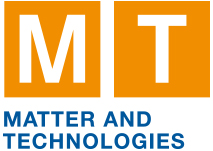Speaker
Description
High-power laser systems are used worldwide to study light–matter interactions. However, high-repetition-rate, high-energy laser systems remain scarce because they require large optical components whose cooling presents a major challenge. To address this, an actively cooled Nd:glass slab amplifier with a large aperture (>30 cm) is being developed as part of the THRILL project (Technology for High-Repetition-Rate Intense Laser Laboratories). The development focuses on two critical aspects: the thermal isolation and active cooling of the Nd:glass slabs and their surroundings.
To investigate thermal isolation, a specially designed amplifier enclosure integrates the flashlamps into a water-cooled container. With this setup, the recovery time from long-term aberrations after optical pumping is reduced from 90 minutes to 5–10 minutes, compared to conventional nitrogen-flushed systems operated at GSI’s PHELIX laser, albeit with an approximately 30 % lower Nd:glass pumping efficiency.
This poster presents the experimental setup, performance trade-offs, and future design strategies, offering insights into the optimization of high-repetition-rate laser systems.
| Speed talk: | I am unwilling/unable to present a speed talk |
|---|

